Phase 0: Are you ready to start losing weight?
People come to us at different stages in their nutritional journey. Some people are well-primed physically to start losing weight right away. These people may not have paid attention to their diet before, or they’ve been eating calories that support a solid overall metabolism.
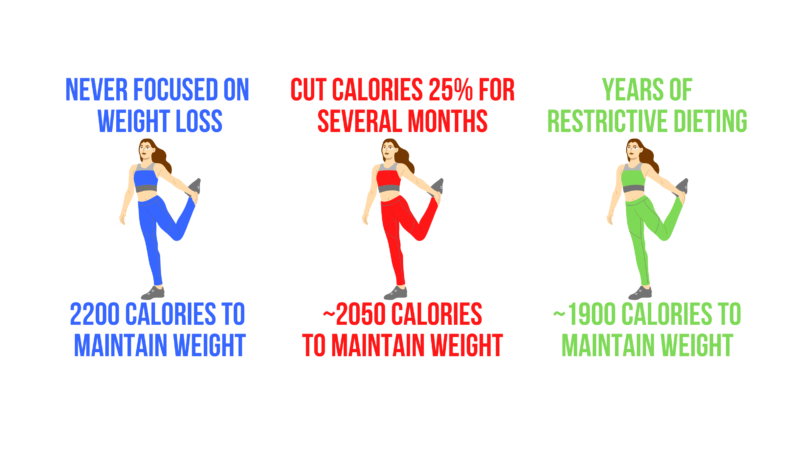
However, people often come to us after long periods of eating very low amounts of calories and high amounts of restriction, but they have reached a plateau and are no longer making progress. Why? At this point, their metabolism has slowed down by up to 20%. Despite eating a small amount of food, they are no longer in a calorie deficit.
In this situation, we have two options. We cannot decrease the calories further. That would be dangerous. Also, eating the same amount but expecting different results isn’t likely to work either. We are left with only one option: slowly increase the calories through a “Reverse Diet” to restore overall metabolic health.
What is a Reverse Diet?
A reverse diet is a phase designed to help you restore optimal metabolic health while minimizing weight gain. The phase typically lasts about 6-12 weeks, depending upon the client and their dieting history.
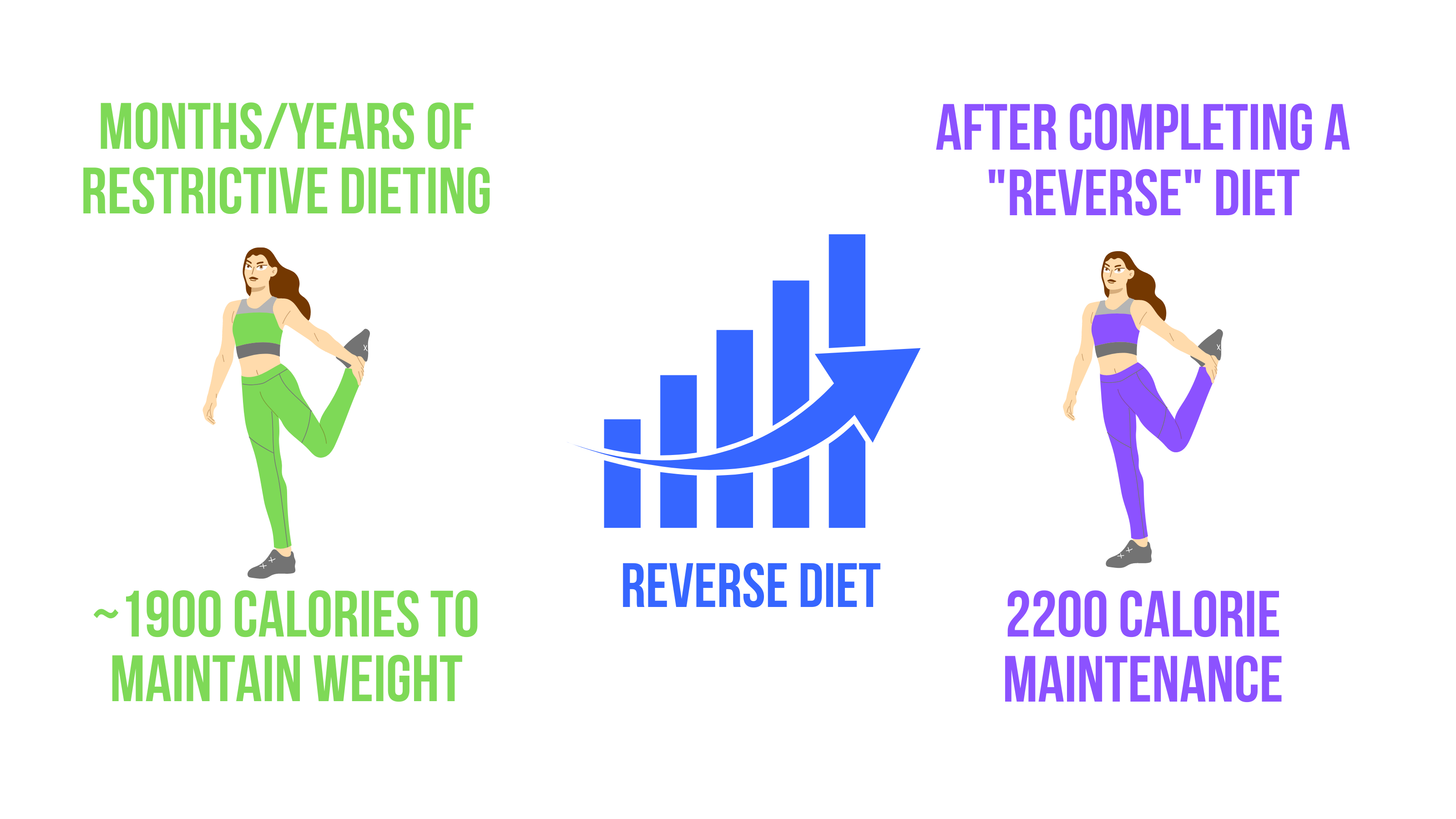
Creating a Healthy Relationship With Food
Lastly, some people come to us with a strained relationship with food, including emotional eating or binge eating. As a result, they are stuck in a vicious cycle.
In this scenario, throwing them into a calorie deficit right off the bat is also a bad idea. We need to create consistency before we can focus on losing weight. To do so, we often focus on getting these clients to consistently eat MORE in the first several months to help break that “Binge-Guilt-Restrict-Binge” cycle.

Part of our intake questionnaire is to determine where you are in your nutritional journey. The answers to those questions will determine what your path forward looks like.
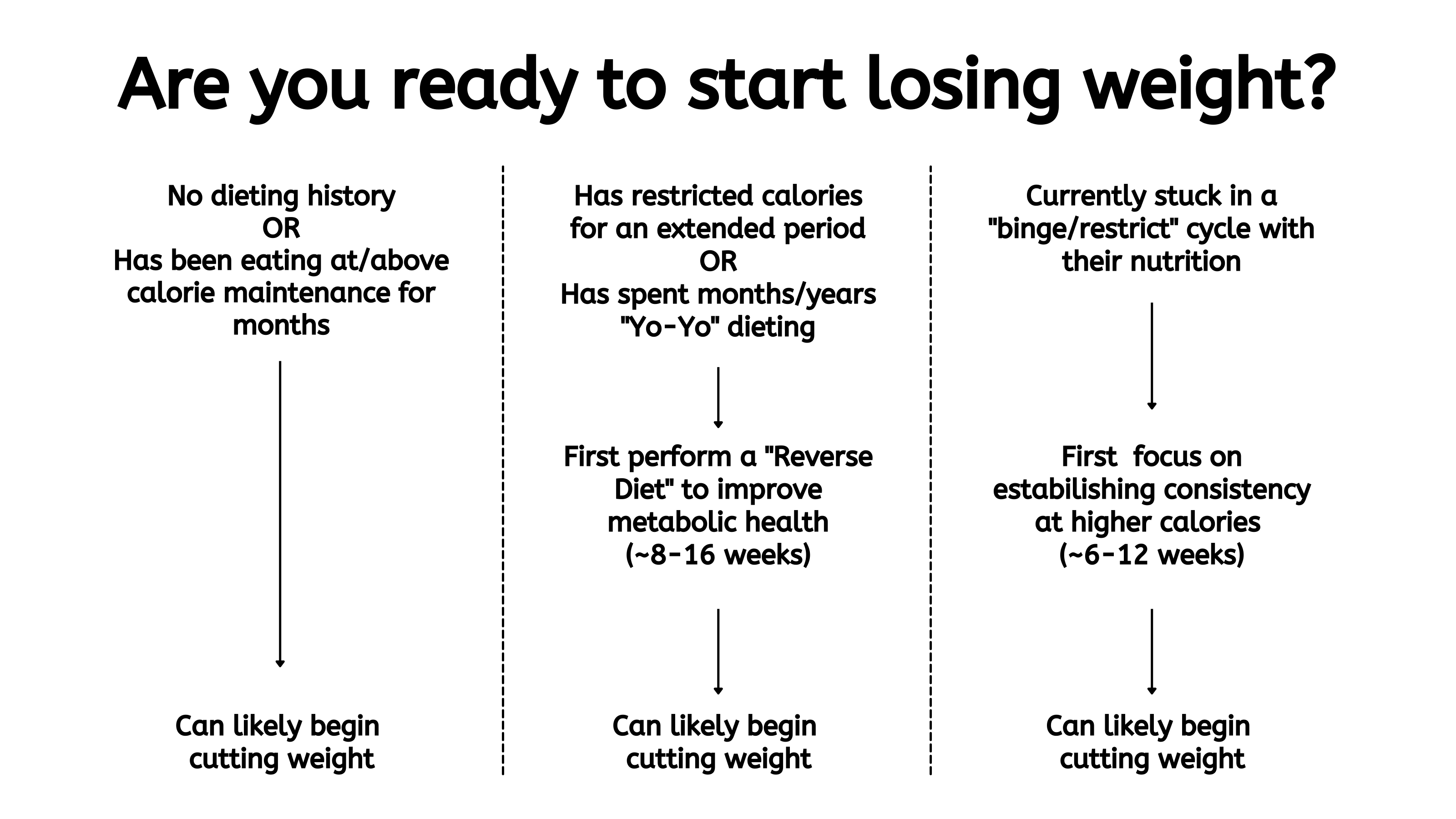
Phase 1: Cutting Weight
After Phase 0, we should all be in a healthy place to start cutting weight, and we can begin the actual process of making that happen.
At M2 Performance Nutrition, we like to use a 20-25% calorie deficit and insert clear diet breaks.
What does that look like in practice?
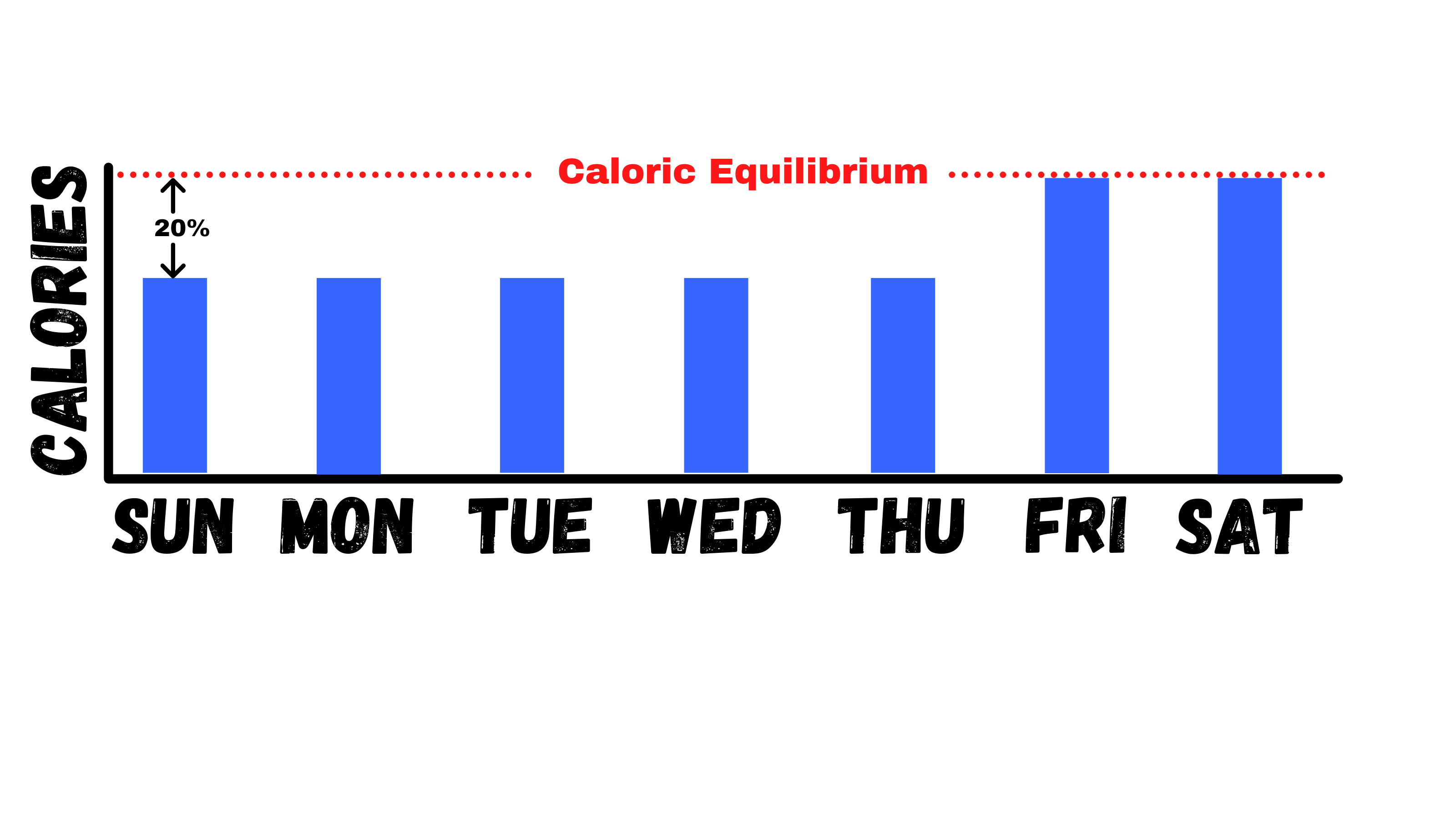
You’ll notice that we have two days in the week that we are intentionally getting OUT of the calorie deficit AKA *intentionally and strategically* eating more than you are the rest of the week.
Why do we do this??
A recent study showed that this approach allowed active individuals to maintain more lean muscle mass while cutting weight. Maintaining muscle mass is a critically important aspect of any successful weight loss program. It allows for a stronger metabolism in the long term and prevents the chances of hitting a plateau. It also can impact what your resulting body composition looks like if you have more or less muscle mass & often changes an individual’s perception of what a “successful” weight loss looks like.
Setting Expectations
Over time, subtle adjustments will still need to be (are made) made to maintain the weight loss progress. Our goal for clients is to lose 0.5-1.0 lbs of weight per week, but it is important to remember that weight loss does not occur linearly for many individuals (especially women). Likewise, body recomposition may initially appear (fat loss and muscle gain), which leads to minimal change on the scale. In these cases, using photos and measurements to compare progress can be beneficial.
In general, it’s good to remember the scale can be a variable tool to use overall and that we should broaden our metrics when assessing progress. To learn more about how to use the weight scale to your advantage, take a look at this blog post.
Phase 2: Diet Breaks
It is important to note that we should not spend ALL year (never mind multiple years) trying to lose weight. At some point, that does become contrary to our overall mental and physical health, potentially doing more harm than “good.” With this in mind, we strongly recommend that after no more than 12 weeks of cutting weight, we take an intentional break from the process and spend a few months focusing more on other goals like performance, building lean muscle mass, and eating to calorie maintenance. This will make FUTURE weight loss substantially easier.
A simple way of thinking of it is instead of spending 11 months trying to lose weight and one month eating to excess (the holidays), we should try to devote ~6-9 months a year trying to build muscle and better metabolism, and ~3-6 months per year more focused on weight loss.
For a client with more fat to lose, a more extended cut (4-6 months) may be possible with shorter structured diet breaks throughout that longer period. For most, taking a break from their deficit after three months will provide the best recipe for success over time.
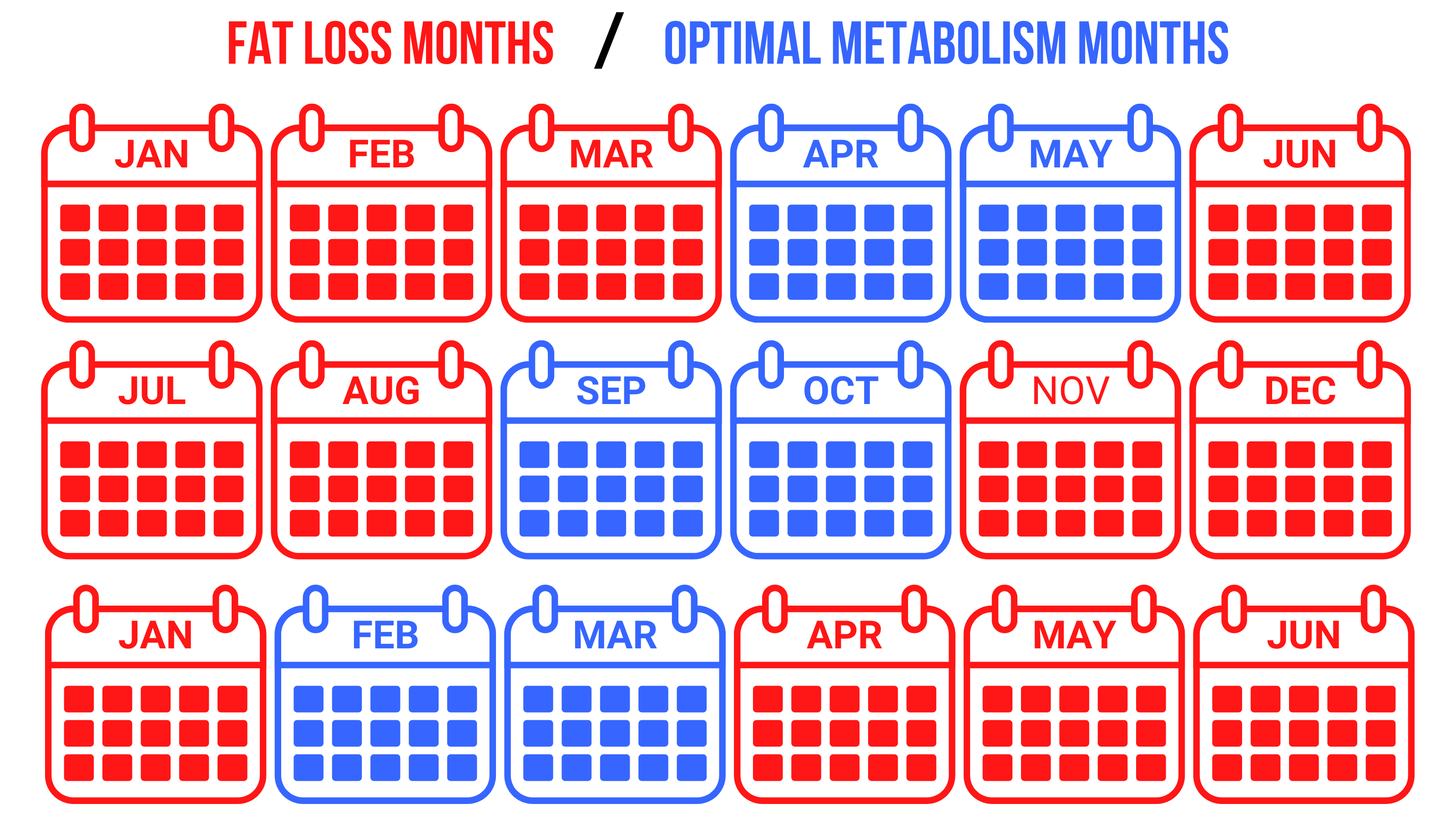
The M2 Fat Loss Blueprint Applied in Real Life
Let’s examine what this approach might look like with an actual M2 client. Rebekah came to M2 with a goal to lose a fairly substantial amount of weight aimed at competing within a certain weight class in a “Strong Man” competition. The good news is that she had been eating at or even above her “maintenance” macros for several months so she had an optimal, strong metabolism and we could begin cutting weight with her pretty much right away.
We used a 20% calorie deficit 5 days a week with 2 “metabolism restoration” days each weekend. Rebekah was very dedicated and hit her macros accurately for 16 weeks over which she lost about 25 lbs, even more than I had expected. She made weight and performed very well at her competition.
Coming out of that initial weight loss phase, we then focused a large amount of time on running a “reverse diet.” From there, Rebekah was curious to see if she could lose another 20 lbs to compete as a middleweight within the Strong Man competitions. Since she had once again spent MONTHS eating to or above her maintenance macros, building a strong metabolism, I had faith we could safely make it happen. Once again, we ran a 20% deficit, 5 days a week and over the course of 5 months, Rebekah lost another 20 lbs, ending up at 180 lbs for her competition. After that phase, we once again ran a reverse diet, slowly adding calories back and focusing on muscle mass gain.
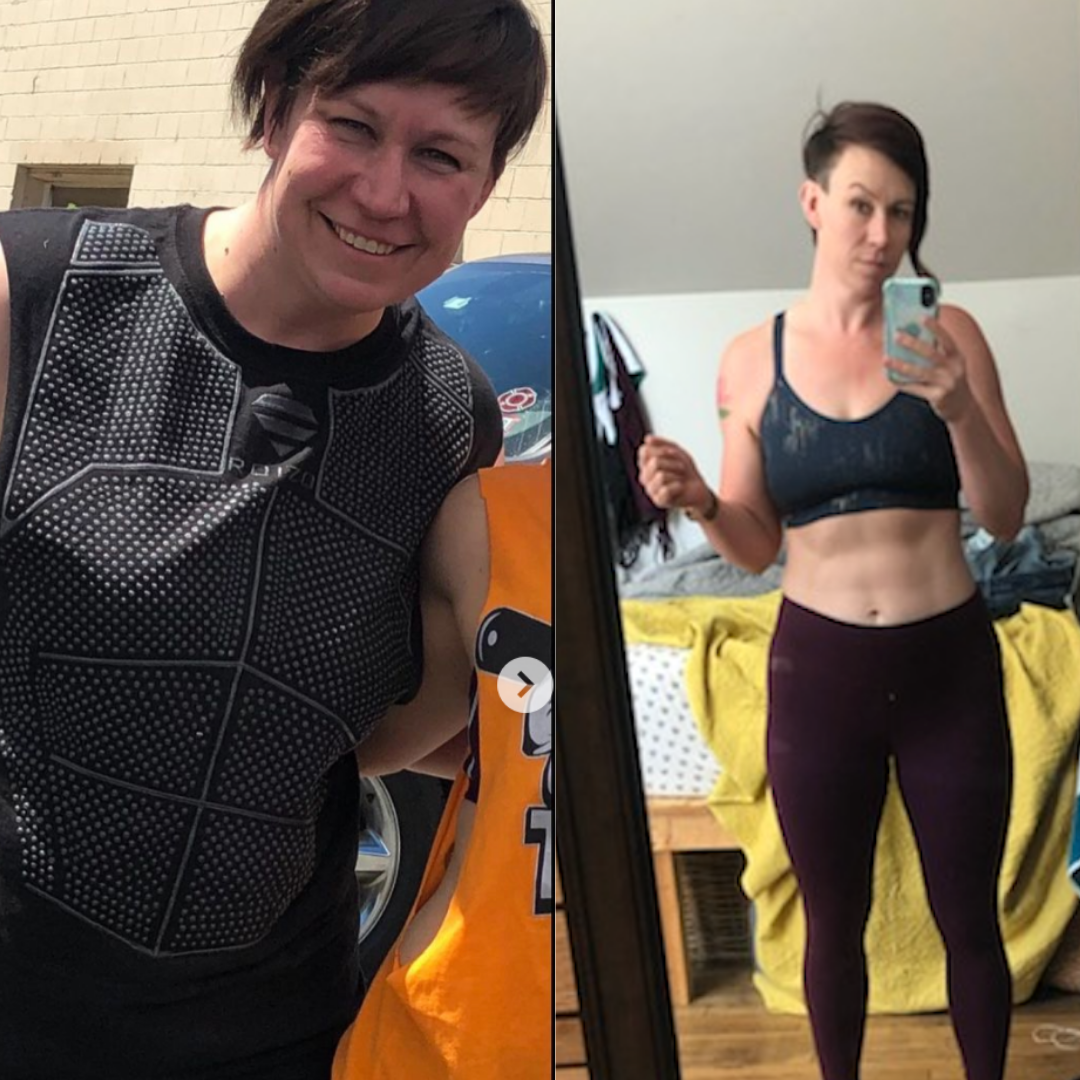
Since then, Rebekah has kept the vast majority of the weight off, never feels starved, and confidently believes that she can keep the routine and habits that we’ve built for her for a very long time. Her experience is a great example of someone that didn’t RUSH to lose all the weight at once but instead worked slowly over time to achieve a greater than 40% weight loss.
Just like our client Rebekah, we promise if you ‘buy into’ our approach we can help you achieve your goals and maintain them for the long term!




